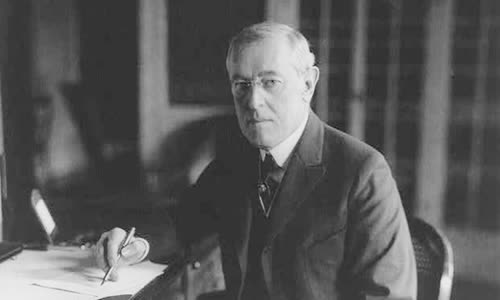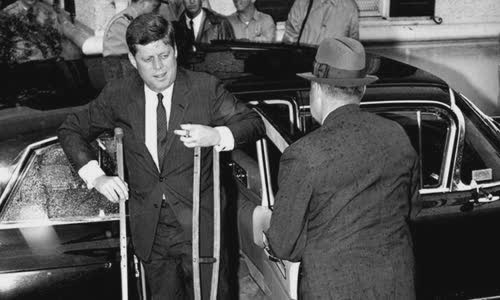US President John F. Kennedy used to take 8 drugs a day, and Woodrow Wilson hid the story of being infected with the flu.
In the case of nCov infection by US President Donald Trump, the White House initially announced that he "had mild symptoms".

President Woodrow Wilson in 1918, the year the pandemic flu raged around the world Photo: Th? vi?n Qu?c h?i M?.
After a press conference with the president's medical team, White House chief of staff Mark Meadows said on October 3 that Trump was "extremely worried" on October 2 and that the next 48 hours will be a period of decisive treatment.
Before Trump, the pandemic once pursued Woodrow Wilson's presidency.
Like many previous administrations, the Wilson-era White House tried to hide the truth about his illness.
More than 100 years later, in a midnight Twitter post on October 2, US President Donald Trump told the world that she and first lady Melania Trump were positive for nCoV.
The White House initially shared very little information about his illness.
Whether the President is ill or not, his statements about Covid-19 have always surprised people when almost every day, Trump announced that the country had changed the course of a pandemic that killed 209,000 Americans.
Trump said he spoke down on the pandemic so as not to cause panic, but observers say politics was what prompted him to do so.
"Wilson's administration, for another reason, has concealed the pandemic," said John Barry, professor of public health at Tulane University, who wrote "Pandemic Flu" in 1918-1919 that caused Wilson to fall.
"Wilson feared that any negative news would undermine America's war efforts, less enthusiasm for victory news. This case is more politically beneficial.
William Howell, a professor of American politics at the University of Chicago, wondered how transparent the White House would be about Trump's illness.
"Obviously he's eager to get back on track," Howell said.

Back pain is just one of the chronic illnesses that have plagued President Kennedy for many years Photo: AP.
The pathology Covid-19 and the 1918 pandemic caused "is very similar, and this is frightening," Howell said.
History has many examples of how presidents concealed people about their illnesses and health conditions.
After leading the country through a decade of war and depression, Franklin D. Roosevelt in 1944 received an early diagnosis of high blood pressure, hypertensive heart disease, heart failure and acute bronchitis.
"During the election, it was understandable that his health was not good, but they were not true," said Roosevelt's doctor.
Historians now believe Roosevelt's medical team concealed the truth both from him and the public.
According to historian Robert Dallek, President John F. Kennedy suffered more pain and illness than people thought.
President Dwight D. Eisenhower had a heart attack in 1955, while on vacation in Colorado.
In 1841, William Henry Harrison became ill, which the doctor thought was pneumonia caused by a cold from horse riding during his inauguration.
After more reporters began to cover each moment a president appeared in public, it became more difficult to keep the health of America's commanders private.
The first memorable case was when James A. Garfield was shot in 1881. At that time, Franklin Trusdell, the AP's event card reporter, sat just outside the presidential hospital room, listening to his breathing and dividing it.
"I listen to every sound," Trusdell wrote to his wife, recounting the night staying up watching Garfield in the White House.



 Umair Abbasi
Umair Abbasi







